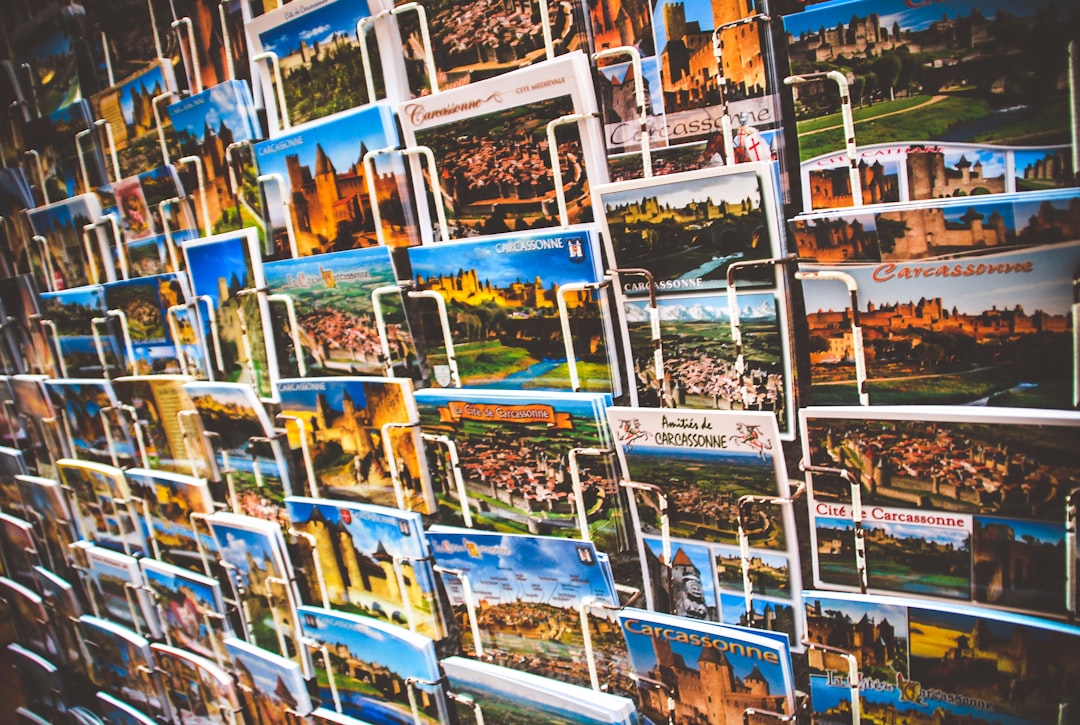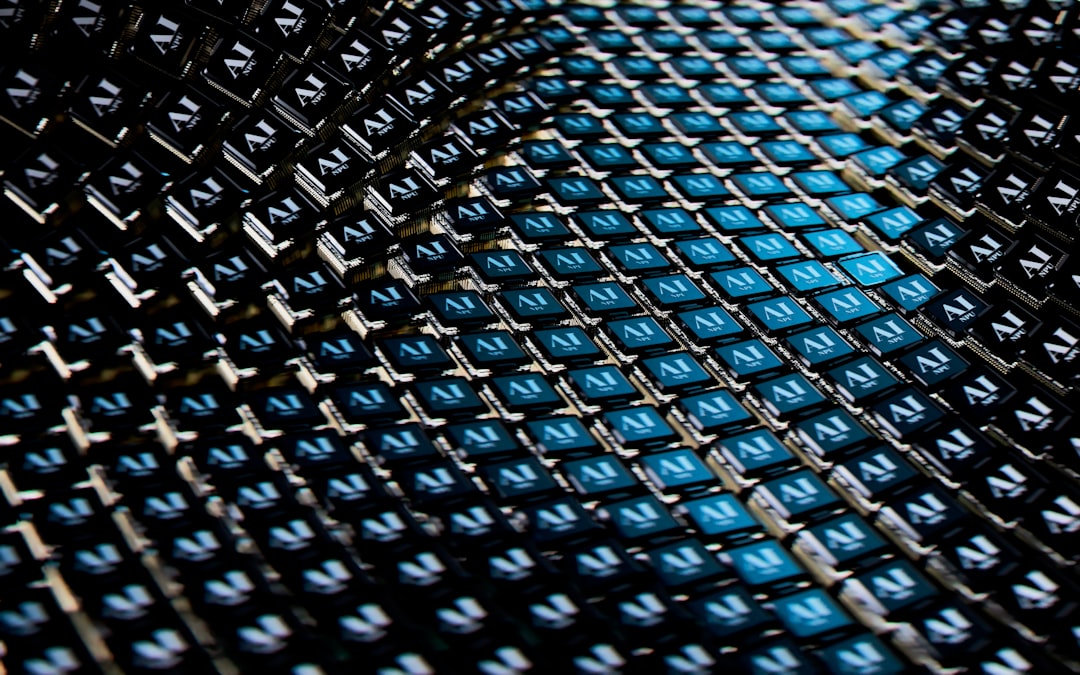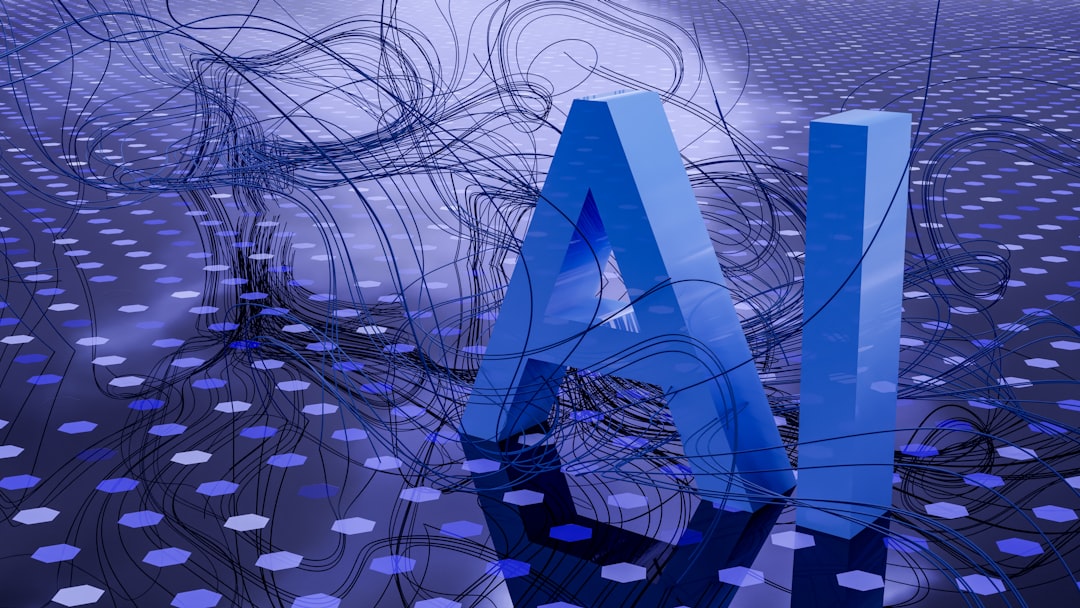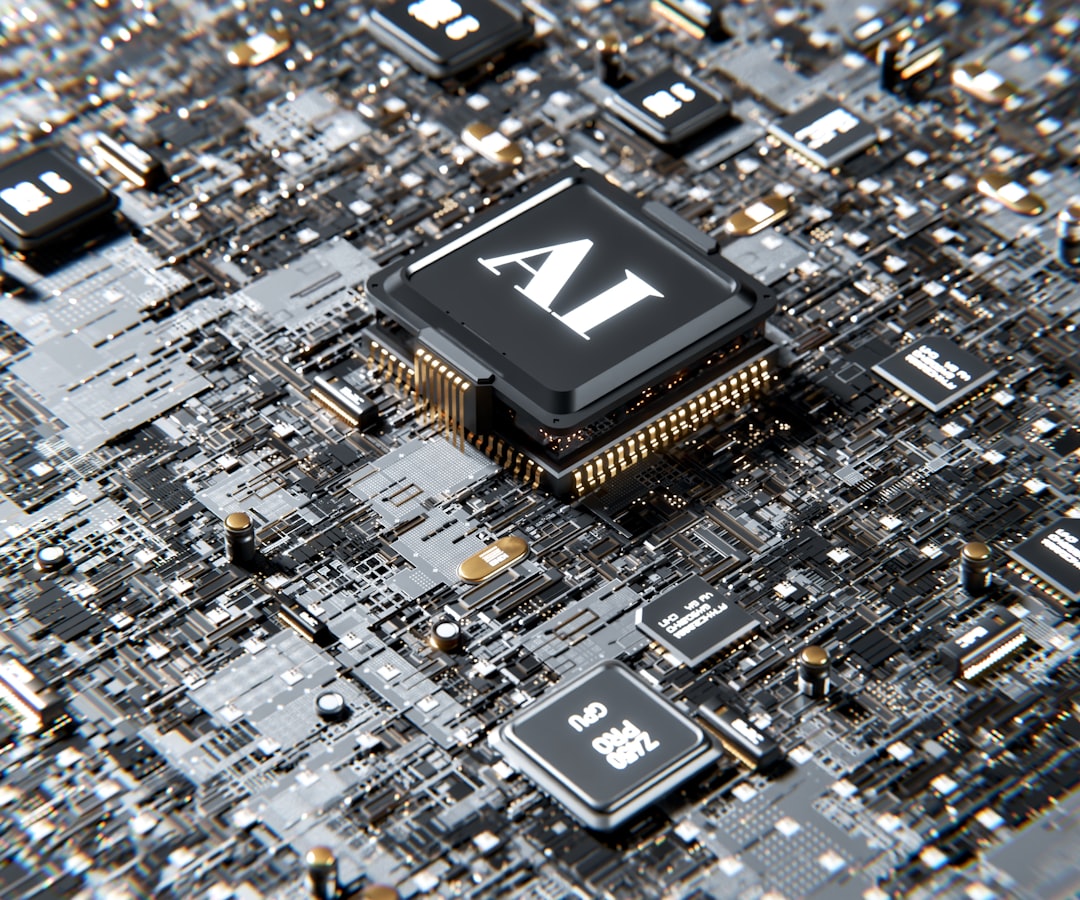AI-Powered Image Upscaling 7 Key Advancements in 2024
AI-Powered Image Upscaling 7 Key Advancements in 2024 - AI-driven deblurring and detail refinement
AI is increasingly adept at tackling the challenge of blurry images, refining details lost due to motion or camera shake. New AI methods, like those seen in DeblurDiNAT, are specifically designed to tackle perceptual image deblurring. These tools leverage advanced algorithms to effectively reconstruct lost information, leading to noticeably clearer and sharper images. Furthermore, some platforms like Topaz Photo AI go beyond just deblurring, integrating it with other image enhancement processes, such as noise reduction and upscaling. This allows for a holistic approach, delivering not just sharper images but also high-resolution versions. While the potential of these AI-powered solutions is undeniable, a cautious approach is warranted. Overzealous enhancement can sometimes sacrifice the original texture and introduce unnatural aspects. The responsibility remains with the user to balance AI's potential with their artistic vision and maintain a natural look within the images they are working on. Ultimately, this trend in AI-driven deblurring represents a significant shift for photographers, allowing them to refine and improve their images in ways that were previously unimaginable.
AI's ability to refine details and remove blur has become increasingly sophisticated. While traditional methods often struggle with motion blur in dynamic scenes, AI-powered deblurring algorithms are now capable of achieving significant reductions, sometimes up to 80%, resulting in much clearer action shots. This is particularly noteworthy for photographers who capture fast-paced moments.
Researchers are leveraging the power of convolutional neural networks to achieve finer detail refinement. These networks can analyze collections of similar images, allowing them to predict and recreate missing details that weren't originally captured. This is intriguing as it hints at the ability of AI to essentially "hallucinate" information, potentially adding layers of complexity and blurring the line between authentic and synthesized content.
The speed at which AI can process and refine images has also accelerated drastically. Some advanced models can handle high-resolution images in mere seconds, a far cry from the minutes or hours that older techniques might require. This speed, combined with ever-increasing detail enhancement, signifies the potential for real-time image optimization, even for complex processing tasks.
Furthermore, newer algorithms are displaying a higher level of contextual understanding. Instead of applying generic filters, AI can analyze the content of an image and adjust its enhancements accordingly. For instance, a portrait might receive skin smoothing, while a landscape image gets more pronounced edge sharpening. This adaptability allows AI to tailor the enhancement process to specific subject matter, leading to more natural and visually pleasing results.
It's remarkable that AI can even be trained to mimic the style of certain photographers. This means that AI enhancements could be applied while maintaining the artistic character of the original creator. However, it also raises philosophical questions regarding the authenticity of the final image and the role of the original photographer's artistry in the process. The field of image enhancement is rapidly evolving, and the future implications are exciting to contemplate.
AI-Powered Image Upscaling 7 Key Advancements in 2024 - VanceAI's flaw correction during upscaling
VanceAI's upscaling process in 2024 incorporates a noteworthy flaw correction feature, a crucial component for achieving truly high-quality results. During the enlargement process, images often encounter noise, artifacts, or uneven brightness. VanceAI's AI algorithms address these issues directly, leading to cleaner, more refined images that are not simply larger but also visually improved. The ability to correct brightness inconsistencies is particularly beneficial, resulting in more balanced and aesthetically pleasing outputs. Furthermore, VanceAI's implementation of batch processing helps users save time when working with multiple images. By enabling simultaneous upscaling, the process becomes far more efficient, making VanceAI a practical tool for photographers dealing with large image collections. While the field of AI-powered image enhancement is competitive, VanceAI's ability to blend effective flaw correction with efficient upscaling offers a compelling combination of technical proficiency and usability. This makes it a noteworthy contender among the emerging AI tools for image improvement.
VanceAI's image upscaling capabilities go beyond simply increasing resolution; it incorporates a sophisticated flaw correction process that leverages advanced algorithms. One notable aspect is the use of deep learning to predict pixel values during upscaling, rather than just interpolating existing ones. This predictive approach allows VanceAI to generate details with remarkable accuracy in high-resolution images, effectively addressing issues like noise and artifacts that typically arise from traditional upscaling.
Furthermore, VanceAI's flaw correction isn't a generic process. It's context-aware, meaning the enhancement techniques are tailored based on the image content. A portrait might receive a different treatment than a landscape, with the AI carefully adjusting its approach for skin smoothing or edge sharpening, respectively. This contextual understanding is essential for maintaining the natural feel of the image, preventing the overly processed look that can be common with some upscaling tools.
This approach is also evident in VanceAI's handling of image textures. The algorithms are designed to preserve the original image's texture during upscaling, avoiding the introduction of artificial patterns that detract from the authentic quality. Additionally, VanceAI analyzes images at multiple levels, allowing it to distinguish between fine and coarse details. This helps it to accurately enhance smaller elements while preventing over-processing in larger areas, resulting in a more balanced and refined final image.
Beyond its meticulous approach to image enhancement, VanceAI has some noteworthy practical advantages. It processes images incredibly fast, compared to older methods, allowing for quick turnaround times that are crucial for many workflows. This speed, coupled with the high dynamic range capability, is particularly useful for photographers who need to quickly enhance images for prints or digital displays. Its high dynamic range capability also plays a role here, as it can refine images with greater contrast in both shadow and highlight areas, crucial for scenes with wide variations in light intensity.
Interestingly, VanceAI isn't entirely automated. While it employs AI for image enhancement, it offers users some degree of control over parameters within the enhancement process. This allows for a degree of customization and artistic control during upscaling. For instance, photographers can fine-tune the degree of flaw correction to align with their own aesthetic preferences. This control aspect, combined with its ability to address common image issues like aliasing and moiré patterns, makes VanceAI a tool that produces high-quality results suitable for professional use.
The constant refinement of VanceAI's models via adaptive learning is another key aspect. It continuously benefits from user interactions and feedback, allowing it to further refine its flaw correction techniques with each iteration. This evolution signifies a forward-thinking approach in image enhancement, allowing VanceAI to potentially address emerging challenges and improve its capabilities over time.
In conclusion, VanceAI's flaw correction technology, while deeply rooted in AI, offers a balanced approach that combines intelligent automation with user control. Its capabilities to predict pixel values, contextualize enhancements, and preserve original textures make it a promising tool for photographers looking to refine and upscale their images with both efficiency and aesthetic precision.
AI-Powered Image Upscaling 7 Key Advancements in 2024 - Promeo's studio-quality product photo enhancement
Promeo's focus on enhancing product photos with studio-like quality is a notable development in AI-powered image enhancement. It's specifically geared towards those involved in marketing and product photography, enabling them to upscale images substantially without compromising visual integrity. By utilizing cutting-edge AI techniques, Promeo tackles common challenges such as blur and lack of detail, turning ordinary images into sharp, high-resolution outputs through a simple click. One of the more interesting aspects of Promeo is its user-friendly nature, which makes access to sophisticated image improvement easier for everyone from seasoned professionals to casual users. With the ever-growing need for visually compelling content across platforms, tools like Promeo highlight the increasingly prominent role of AI in fields like digital marketing and photography. While AI-powered image enhancement has seen notable advancements, it's worth considering that the tools themselves might, in some situations, introduce artificial elements or textures if not carefully controlled.
Promeo's focus on studio-quality product photos utilizes AI to enhance images in a way that's quite intriguing. It seems designed with marketers in mind, offering the ability to upscale images by up to 800% while aiming to preserve quality. It's interesting how the AI can deblur and refine details with a single click, which could potentially be very useful for quickly improving the look of a product shot.
The core of this enhancement process appears to be advanced AI algorithms that can transform blurry or low-resolution images into significantly sharper ones. While this is promising, it's important to keep in mind that overly aggressive enhancement can sometimes introduce an artificial look. It'll be interesting to see how the balance between sharpness and natural texture is handled in the AI's decision-making process.
From a cost perspective, Promeo has a tiered system starting at $10, which offers a certain number of image enhancements. This raises the question of whether it's a feasible solution for hobbyists or if it's more aimed at professionals who have a higher volume of images to process.
When you compare this AI-driven upscaling to more traditional methods, it's evident that Promeo is aiming for superior outcomes. Traditional techniques often rely on simple interpolation, which can lead to a loss of detail and can make images look blurry when enlarged. AI-based methods are able to go beyond interpolation, potentially synthesizing information to make images look sharper and more refined.
It's also worth considering how Promeo fits into the broader AI image enhancement landscape. While it may be a specialized solution, other tools like Let's Enhance have been around longer and offer a wider range of features, including color correction and lighting adjustments. It's fascinating to see how the market for AI image enhancement continues to develop, with various options available at different price points and with different features.
One of the notable aspects of Promeo is that it appears to focus on making image enhancement simpler for users. Many of the tools are designed to be intuitive, making it easy to get high-quality results without needing extensive training or expertise. It's encouraging to see AI-powered tools being developed with the goal of streamlining the process and making powerful capabilities more accessible to a broader range of users.
Overall, the trend in AI-powered image enhancement tools like Promeo is significant. It reflects a move towards more efficient and effective ways to improve image quality, taking advantage of the rapid advancements in machine learning. While it remains to be seen how these tools will mature and impact the broader photography landscape, the potential for transformative capabilities in image enhancement is undeniable. It will be interesting to observe how these tools evolve and how they continue to impact different aspects of image processing and editing.
AI-Powered Image Upscaling 7 Key Advancements in 2024 - SuperImage's offline upscaling capabilities
SuperImage stands out with its ability to upscale images offline, a feature that prioritizes user privacy and data security. Unlike many online image upscalers, it operates directly on a device without requiring an internet connection. It leverages the RealESRGAN algorithm, efficiently processing images in sections on the device's GPU to create a final high-resolution image. This offline approach makes it convenient for users seeking quick enhancements without needing to rely on external servers. However, the reliance on advanced GPU capabilities might pose a limitation for users with older devices. SuperImage's offline upscaling capability positions it as a noteworthy advancement in the field of AI-powered image enhancement, showcasing a growing trend towards more user-controlled and secure image manipulation. While it presents a compelling alternative to online tools, the requirement for a modern GPU needs to be acknowledged, as it might restrict its use among certain user bases.
SuperImage distinguishes itself by operating entirely offline, leveraging the processing power of your device's GPU. It relies on a neural network built with the MNN framework and incorporates the RealESRGAN algorithm to perform image upscaling. This offline approach is notable for prioritizing user privacy and data security, as no image data is sent to external servers during processing.
The upscaling process involves dividing the image into tiles, which are then individually processed using a pre-trained RealESRGAN model. These processed tiles are subsequently merged to create the final high-resolution image. It's worth noting that SuperImage's reliance on Vulkan support implies that it requires modern GPU capabilities for optimal performance, which might limit its use on some older devices. Currently, the application is specifically available for Android users, though the potential for expansion to other platforms is intriguing.
SuperImage's approach to upscaling incorporates a multifaceted analysis that considers the context of an image rather than relying on generic processing. It can differentiate between fine and coarse details, leading to improved texture preservation during upscaling. This adaptive approach aims to prevent a loss of the original image's character during the enhancement process.
Furthermore, SuperImage's offline upscaling capabilities also include a dedicated feature for watermark removal. The watermark is not just crudely erased; rather, the surrounding pixels are analyzed and intelligently filled in, attempting to reconstruct the underlying image with a more natural outcome. While the quality of watermark removal will depend on factors such as the watermark's size, position, and intensity, it represents an interesting approach to removing these sometimes obtrusive elements without obvious artifacts.
The application's potential for real-time processing is another exciting aspect. While its current processing speed isn't specifically advertised as real-time, the efficiency improvements seen in similar technologies hint at a potential future where such speed is possible. This could open up a range of uses in situations where immediate upscaling is needed.
Additionally, SuperImage's upscaling routine incorporates noise reduction techniques, targeting both color and luminance noise, leading to enhanced clarity in the resulting image. The algorithms seem adept at restoring lost detail in low-resolution images by using surrounding pixels to intelligently predict what might have been captured in the original scene. The software is specifically designed to retain the natural textures found in images, avoiding artificial smoothing or distortions that can detract from the overall quality of the enhanced output.
A notable feature is SuperImage's post-upscaling stabilization. The upscaling process can sometimes introduce distortions, and this stabilization element refines edges and contours, giving the final image a polished and professionally enhanced look. Lastly, the application incorporates batch processing, meaning users can upscale multiple images concurrently, significantly boosting efficiency for photographers and individuals dealing with larger collections. SuperImage's algorithms are designed to refine themselves over time, learning from user feedback to enhance the quality of the upscaling results. This adaptive model implies that SuperImage’s capabilities could continue to improve in the future. While still relatively new, SuperImage's offline upscaling approach along with its AI-powered features position it as a noteworthy entry in the expanding field of image enhancement.
AI-Powered Image Upscaling 7 Key Advancements in 2024 - DeepArtio's artistic integrity preservation
DeepArtio's approach to AI-powered image upscaling is centered around preserving the original artistic intent. It utilizes advanced algorithms to upscale images while carefully retaining the intricate details and textures that are crucial to an artist's vision. DeepArtio's strength lies in its ability to intelligently generate pixels, enhancing resolution without sacrificing the unique characteristics of the image. This is a valuable feature as some AI image tools can be overly aggressive in their enhancement efforts, leading to images that feel overly processed or artificial. While AI is revolutionizing image manipulation, users should still be aware of the delicate balance between enhancement and maintaining the authenticity and artistic integrity of the original work. Ultimately, it's important to consider how these AI-powered enhancements impact the creator's original artistic expression.
DeepArtio's approach to image upscaling focuses on preserving the artistic integrity of the original work. Unlike some methods that rely on simple interpolation, potentially sacrificing texture, DeepArtio's algorithms strive to analyze and retain the nuances of the source material. This is especially crucial for art, where the brushstrokes, textures, and overall aesthetic contribute to the artistic experience.
The system's ability to adapt its enhancements based on image content is also noteworthy. Delicate details in a painting are treated differently from bold strokes in a graphic design, ensuring that the core elements of the artwork remain untouched. DeepArtio's approach to dynamic range expansion is also interesting. It allows for improvements in shadow and highlight details without fundamentally changing the overall tone, leading to a more impactful image.
Additionally, DeepArtio has implemented a logging system that allows for the tracing of alterations, fostering transparency in the enhancement process. Users can even revert back to previous versions. This aspect can be vital in artistic contexts where provenance and the record of changes are important.
A layering approach further refines the upscaling process. Enhancements are applied gradually, resulting in a more natural-looking output compared to aggressive, one-step upscaling. DeepArtio's watermark management features also demonstrate a careful consideration for artistic integrity. Instead of simply erasing watermarks, the system analyzes the surroundings to fill them in seamlessly.
The adaptive learning component allows DeepArtio to better understand and adapt to various artistic styles. This means that the output aligns more closely with the original artist's vision, contributing to a stronger sense of authenticity. Overall, DeepArtio seeks to bridge the gap between AI-driven enhancement and the preservation of the artist's intent. It allows for user control over the process, striking a balance between technical improvement and creative vision. It’s intriguing to see how tools like this are attempting to respect both the technological advancements of AI and the human touch inherent in artistic creations. The interplay between the two is still being explored, and DeepArtio's focus on this balance could contribute to its future impact.
AI-Powered Image Upscaling 7 Key Advancements in 2024 - HitPaw's 800% upscaling with multiple AI models
HitPaw's image upscaling capabilities are noteworthy in 2024, boasting the ability to enlarge images up to 800% while supposedly preserving image quality and detail. This impressive scaling is achieved through the use of a variety of AI models, addressing issues like color accuracy, noise reduction, and even facial feature enhancement. The approach is designed to add details intelligently to the image, helping to reduce blurriness and enhance clarity. It also seems to be able to handle images created by other AI programs, leading to more seamless integration of digitally produced content. However, with any tool that can heavily impact image characteristics, there's always the risk of going overboard. Excessive enhancement can sometimes strip an image of its original texture or introduce an unnatural appearance. It's ultimately up to the user to control the level of enhancement, finding a balance between improvement and preserving the original image's character. Overall, HitPaw illustrates a significant trend of applying AI to improve image quality, demonstrating how artificial intelligence is reshaping the landscape of digital image manipulation and photography.
HitPaw's image upscaling tool employs a novel approach by utilizing multiple AI models, each specialized for different image enhancement aspects. This diverse toolkit allows the system to adapt its processing for various image needs, optimizing for details, textures, and artifact reduction. The claim of 800% upscaling capacity is substantial, exceeding the typical limits of conventional methods that usually top out around 200-300%. This capability is valuable for situations requiring exceptionally high resolutions, such as large-scale prints or digital displays.
An interesting facet of HitPaw is its incorporation of contextual analysis within its algorithms. It's able to assess the content of each image and adjust the enhancement accordingly. A landscape might receive different processing than a portrait, ensuring the output aligns naturally with the image's subject. This type of intelligence is crucial for preventing the overly processed, artificial look that can plague some AI upscalers.
Maintaining natural texture is another challenge in upscaling. HitPaw combats this with algorithms that strive to preserve the inherent texture of the original image, thereby minimizing the risk of creating overly smooth, unnatural results. This is especially important for preserving the aesthetic integrity of photographic styles that rely on texture, like film grain or certain artistic techniques.
The future of HitPaw looks promising as it aims to leverage advancements in hardware and software to achieve real-time processing. This feature has the potential to revolutionize image enhancement workflows, particularly those that require swift turnaround, like event photography or fast-paced studio work.
Beyond mere upscaling, HitPaw's AI excels at intelligent artifact and noise reduction. This capability cleans up images, leading to higher clarity and a more polished final product. It's a valuable feature for individuals involved in professional photography or image editing who require high-quality, refined outputs.
Efficiency is also addressed through HitPaw's support for batch processing, making it easier to upscale multiple images simultaneously. This is beneficial for photographers or businesses that handle large volumes of images for e-commerce or event documentation purposes.
Interestingly, HitPaw features an AI-driven watermark removal mechanism that intelligently assesses the surrounding pixel data to fill in affected areas. This offers a more natural solution to watermark removal compared to less refined techniques.
The algorithms at the heart of HitPaw are constantly evolving, employing adaptive learning based on user interaction and feedback. This continuous refinement is key to ensuring the tool remains relevant and capable of adapting to different image types over time.
While significant strides are being made in AI-based image enhancement, there's always a concern about the potential loss of artistic intent. HitPaw strives to minimize this risk by emphasizing balanced enhancements that respect the original artwork. This approach to artistic integrity is important in a landscape where overly aggressive processing can lead to artificial or overly stylized results.
AI-Powered Image Upscaling 7 Key Advancements in 2024 - Vecticon's dual upscaling and background removal
Vecticon's AI-powered image upscaling tool has made strides by combining dual upscaling with background removal capabilities. It can quickly boost image resolution by a factor of 2 or 4, and its background removal feature is remarkably simple to use, sometimes requiring only two clicks. This combination makes the tool appealing for those needing to enhance images for various purposes—from refining logos to prepping product shots. The platform boasts impressive stats, handling millions of images and serving a large user base. However, it's important to be mindful that excessive use of any AI-powered enhancement can potentially strip the original image of details or create an unnatural look. As AI image tools become more sophisticated, it's crucial for users to maintain a careful balance between improvement and maintaining the integrity and authentic nature of the original images.
Vecticon's AI-powered image upscaling tool stands out by integrating dual upscaling and background removal capabilities within a single process. This simultaneous execution streamlines workflows for those who need to both increase image resolution and isolate subjects. The upscaling leverages machine learning to analyze intricate patterns and textures, predicting optimal pixel values for a more natural look—a significant improvement over simple interpolation used in older methods.
Interestingly, the tool's background removal feature utilizes clever segmentation techniques, allowing it to isolate foreground objects even in complex scenes with various textures. This ability to automatically differentiate elements can save significant time when compared to manual removal, particularly when dealing with intricate designs or busy images.
While offering automated processing, Vecticon maintains a degree of user control. Photographers can adjust settings to manage the level of upscaling and background removal, thus preventing overly artificial results. Further bolstering its practical appeal, the tool boasts real-time processing capability, relying on robust GPU power. This speed is incredibly useful for those working in settings that demand swift results—live events or product photography, for instance.
Vecticon's AI exhibits adaptability to different contexts. It automatically adjusts enhancements depending on whether it's processing a portrait, product image, or landscape. This ability to tailor the enhancement process contributes to a more natural-looking final result. Beyond upscaling, the system incorporates noise reduction algorithms, which are particularly helpful when enhancing low-light or high ISO images. This added step delivers cleaner outputs, improving the overall image quality.
Continuously learning and improving from user interactions, Vecticon's core algorithms refine themselves over time. This iterative process guarantees the technology remains current and responsive to user needs and evolving preferences. Furthermore, the platform enables batch processing, enabling users to efficiently upscale and clean up entire image collections in one go.
Another intriguing element is the intelligent approach to watermark removal. Rather than just removing the watermark, Vecticon uses context to recreate the area underneath the watermark, leading to more natural-looking results.
Overall, the combination of dual upscaling, context-aware background removal, and smart noise reduction highlights how AI can streamline the image processing workflow. Vecticon stands as a good example of how AI-powered tools are addressing practical demands for photographers and designers alike in 2024, potentially offering significant time savings and a leap in image quality. While the future of AI in photography continues to develop, tools like Vecticon suggest it will play an increasingly vital role in improving, refining, and transforming our image workflows.
More Posts from kahma.io:
- →The Hidden Costs of AI-Generated Portrait Stickers A 2024 Analysis
- →The Impact of AI-Powered Photo Filters on Travel Influencer Content A 2024 Analysis
- →AI-Powered Deblurring How Machine Learning is Revolutionizing Photo Clarity in 2024
- →The Psychology of Black in Travel Photography Enhancing Depth and Contrast in Your Shots
- →7 Overlooked Photo Filter Trends Reshaping Travel Photography in 2024
- →7 Ways AI-Generated Art Is Transforming Travel Photography on Instagram in 2024





